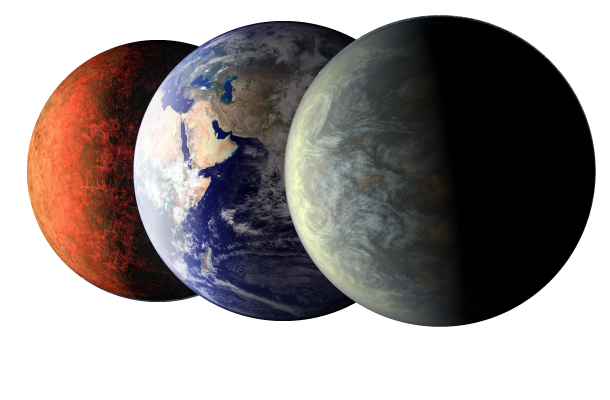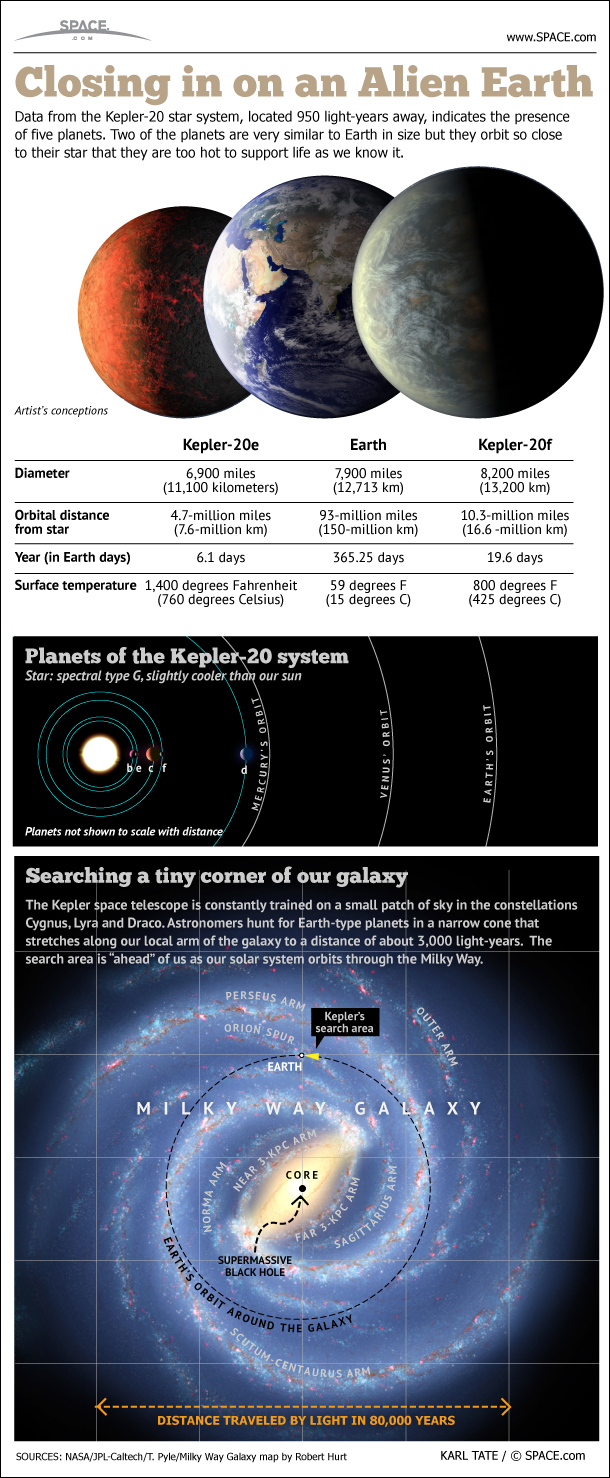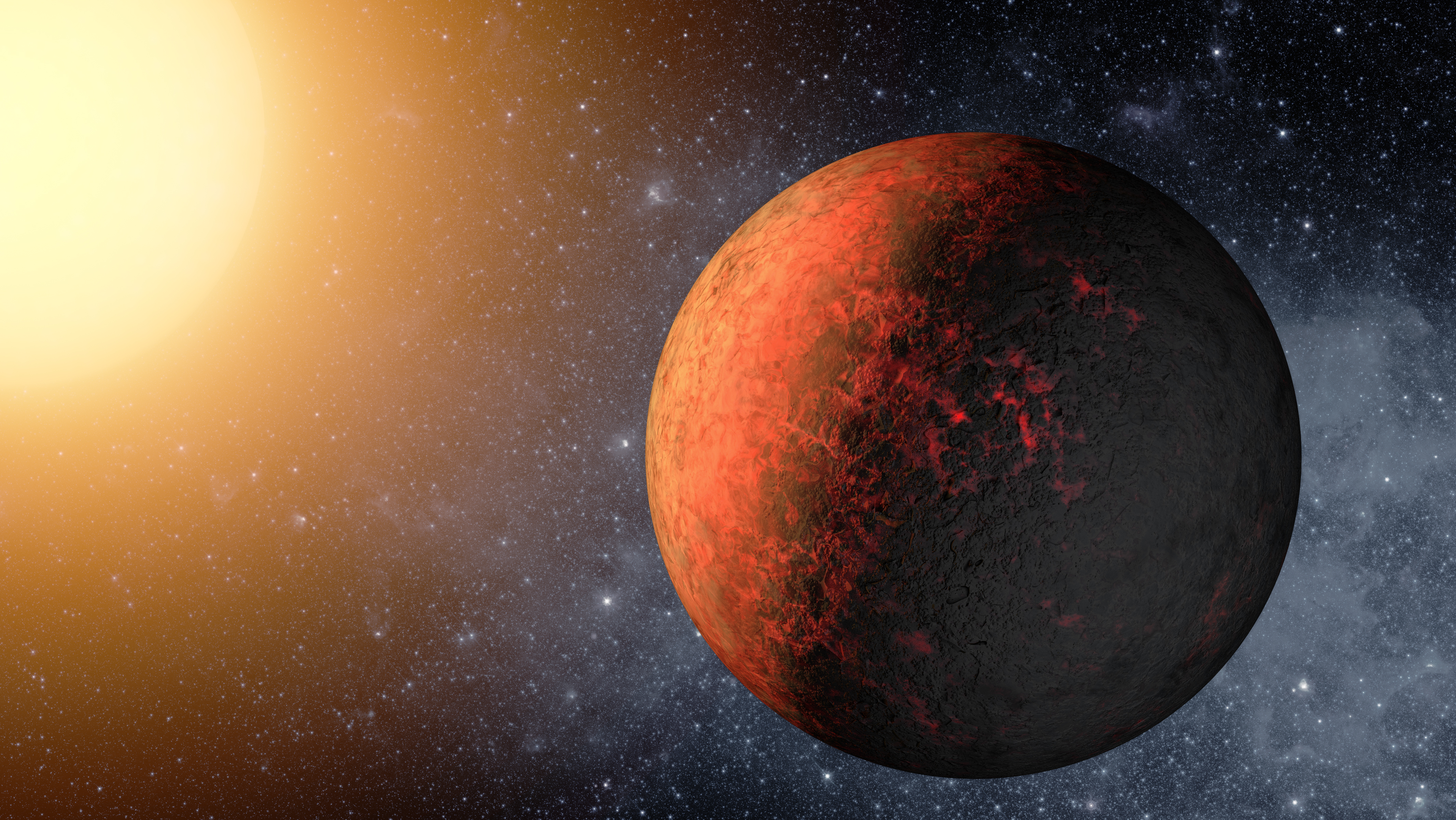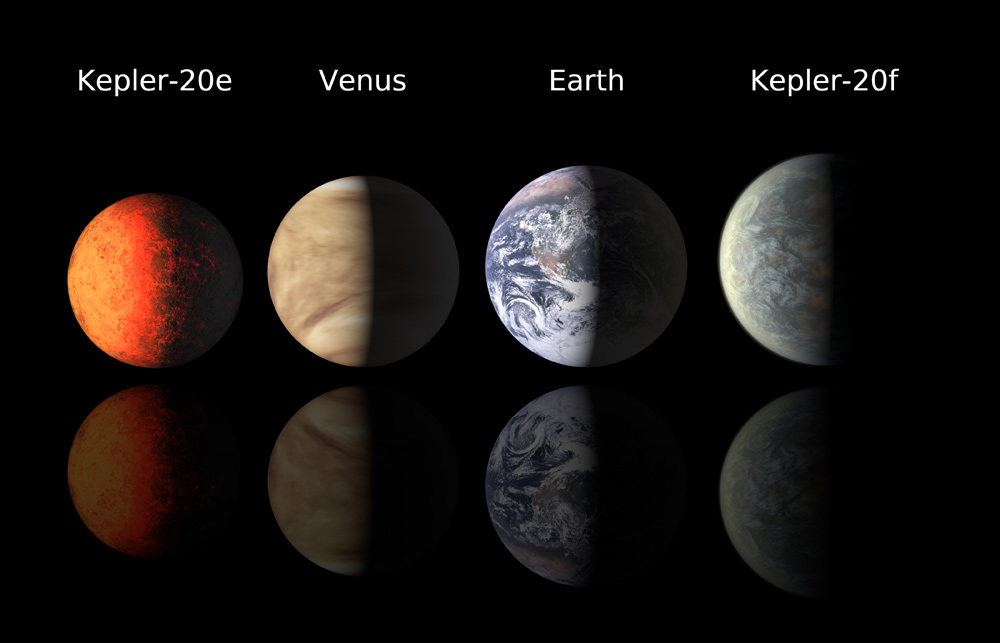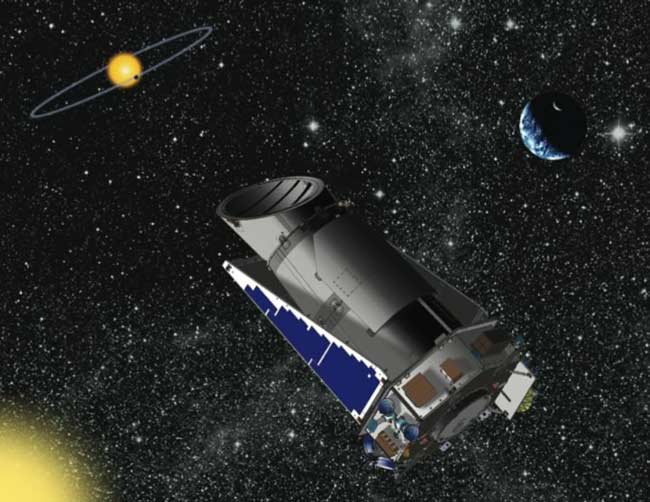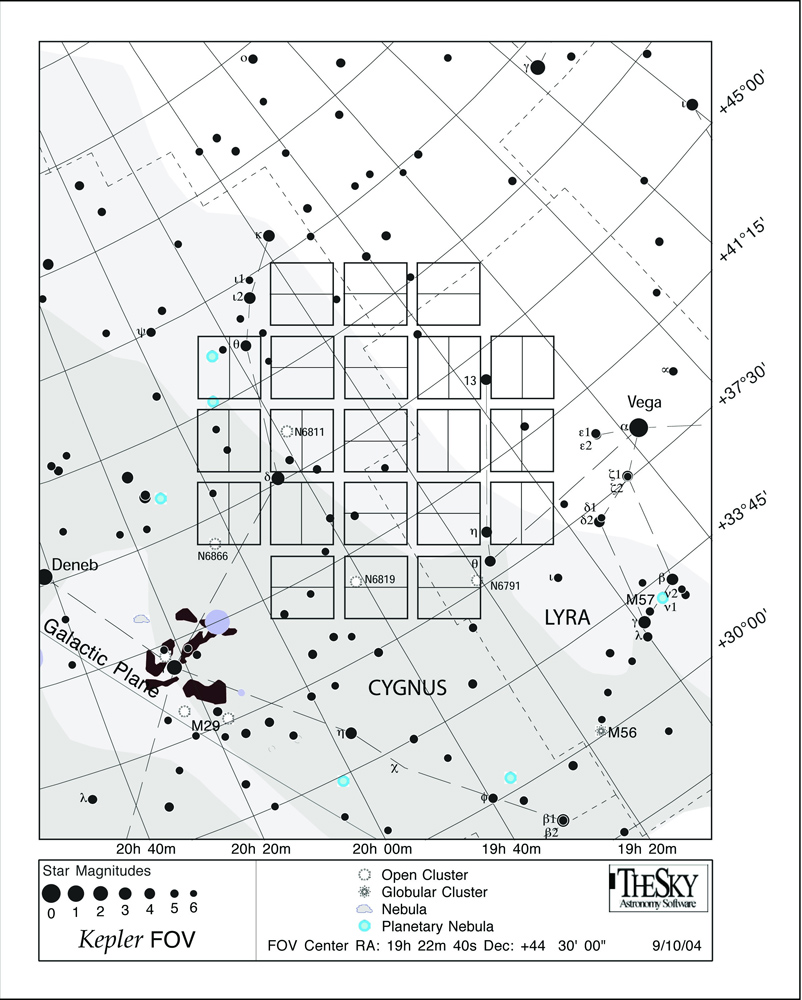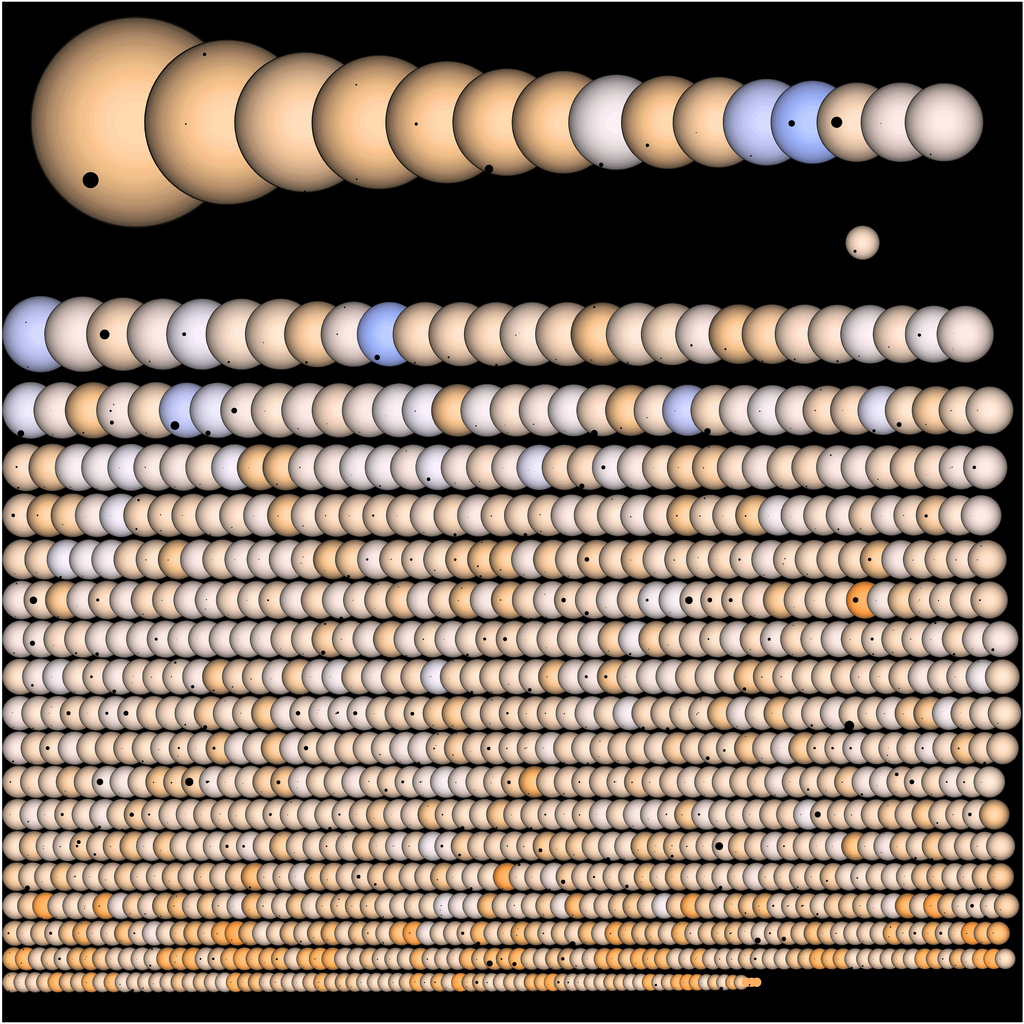Gallery: First Earth-Size Alien Planets Discovered

At Last, Earth-Sized Alien Worlds
The Kepler space telescope has spied evidence of two Earth-sized worlds in a star system 950 light-years away. [Full Story]
Infographic: Earth-Sized Alien Worlds
The Kepler space telescope has spied evidence of two Earth-sized worlds in a star system 950 light-years away. This SPACE.com infographic depicts the main features of the planets. [Full Story]
Alien Solar System of Kepler-20
This still from a NASA animation shows the orbits of the five planets residing in the Kepler-20 star system 950 light-years from Earth. The alien solar system is home to two Earth-size planets, the first such exoplanets ever found.
Alien Planet Kepler-20e
An artist's rendering of the newfound alien planet Kepler-20e, which scientists say is smaller than Earth, at about 0.87 times the width of our planet.
Alien Planet Kepler-20f
This illustration shows the alien planet Kepler-20f, discovered by NASA's Kepler space telescope. At 1.03 times the width of Earth, Kepler-20f is the second smallest exoplanet yet found.
Kepler-20 Planets to Scale
This illustrated graphic shows the two newfound Kepler-20 planets shown to scale with Earth and Venus. [Full Story]
Kepler Planet Sizes
Comparative sizes of Kepler planets, through Kepler-22b.
Breaking space news, the latest updates on rocket launches, skywatching events and more!
Planets Large and Small Populate Our Galaxy
Astronomers searching for another Earth are getting closer, thanks to recent discoveries by the Kepler space telescope. [See our full infographic on the types of alien planets here.
Kepler Spacecraft to Hunt Earth-Like Worlds
An artist's interpretation of the Kepler observatory in space.
Kepler Field of View Star Chart
This star chart illustrates the large patch of sky that NASA's Kepler mission will stare at for the duration of its three-and-a-half-year lifetime. The planet hunter's full field of view occupies 100 square degrees of our Milky Way galaxy, in the constellations Cygnus and Lyra.
Illustration of Kepler alien planet candidates and their host stars
This illustration shows all 1,235 of the potential alien planet candidates NASA's Kepler mission has found to date. The planets are pictured crossing front of their host stars, which are all represented to scale.

Space.com is the premier source of space exploration, innovation and astronomy news, chronicling (and celebrating) humanity's ongoing expansion across the final frontier. Originally founded in 1999, Space.com is, and always has been, the passion of writers and editors who are space fans and also trained journalists. Our current news team consists of Editor-in-Chief Tariq Malik; Editor Hanneke Weitering, Senior Space Writer Mike Wall; Senior Writer Meghan Bartels; Senior Writer Chelsea Gohd, Senior Writer Tereza Pultarova and Staff Writer Alexander Cox, focusing on e-commerce. Senior Producer Steve Spaleta oversees our space videos, with Diana Whitcroft as our Social Media Editor.
